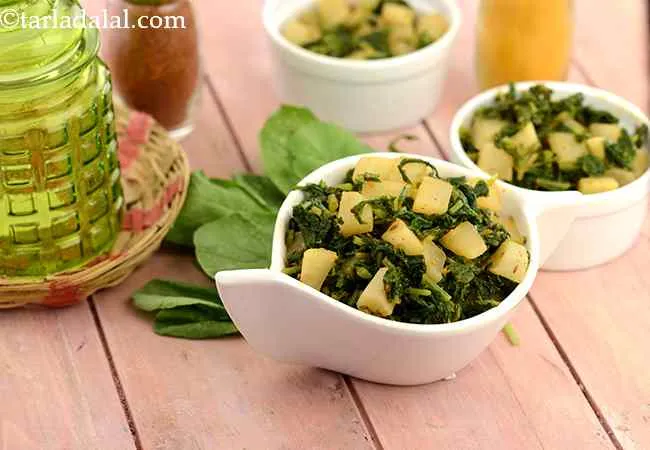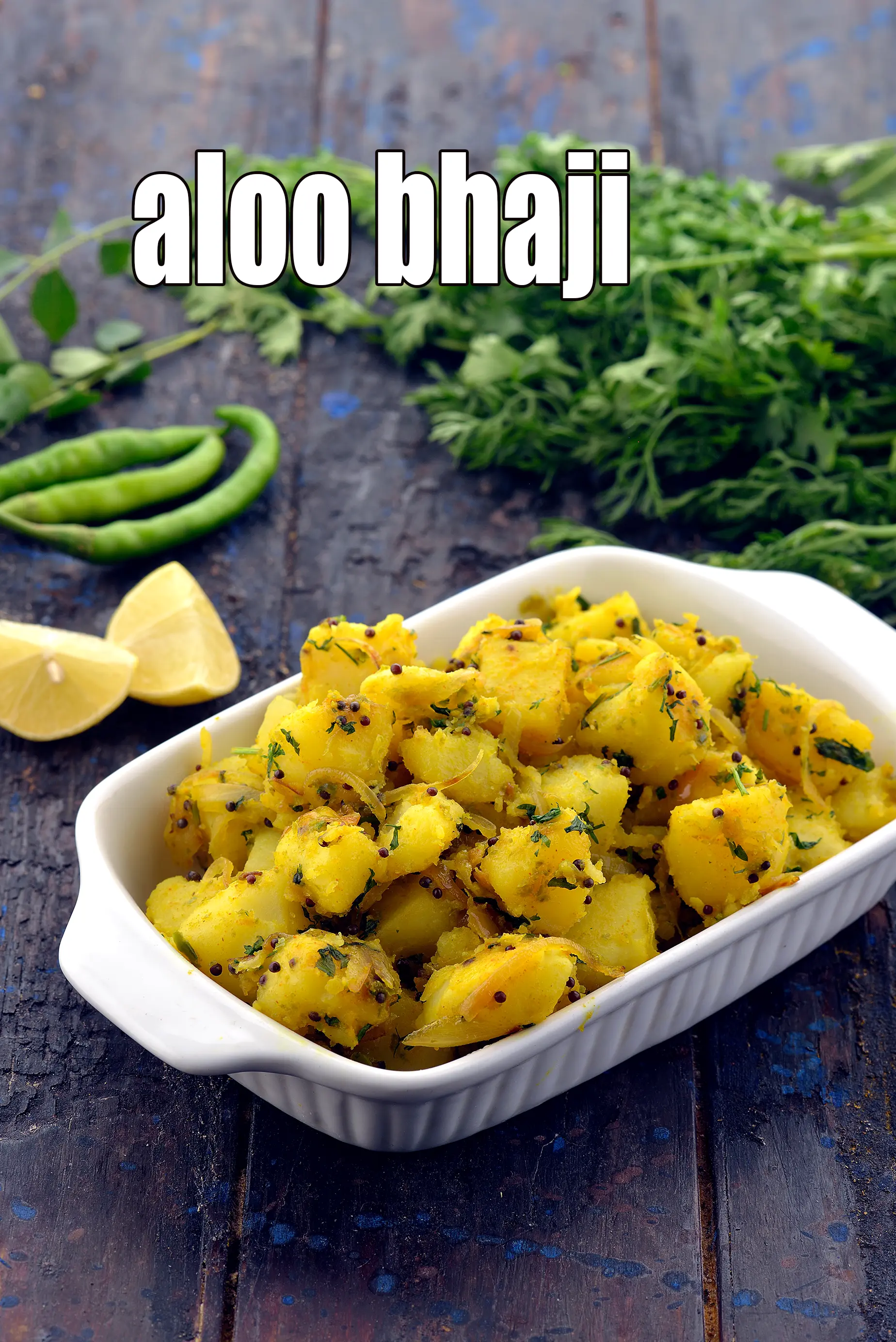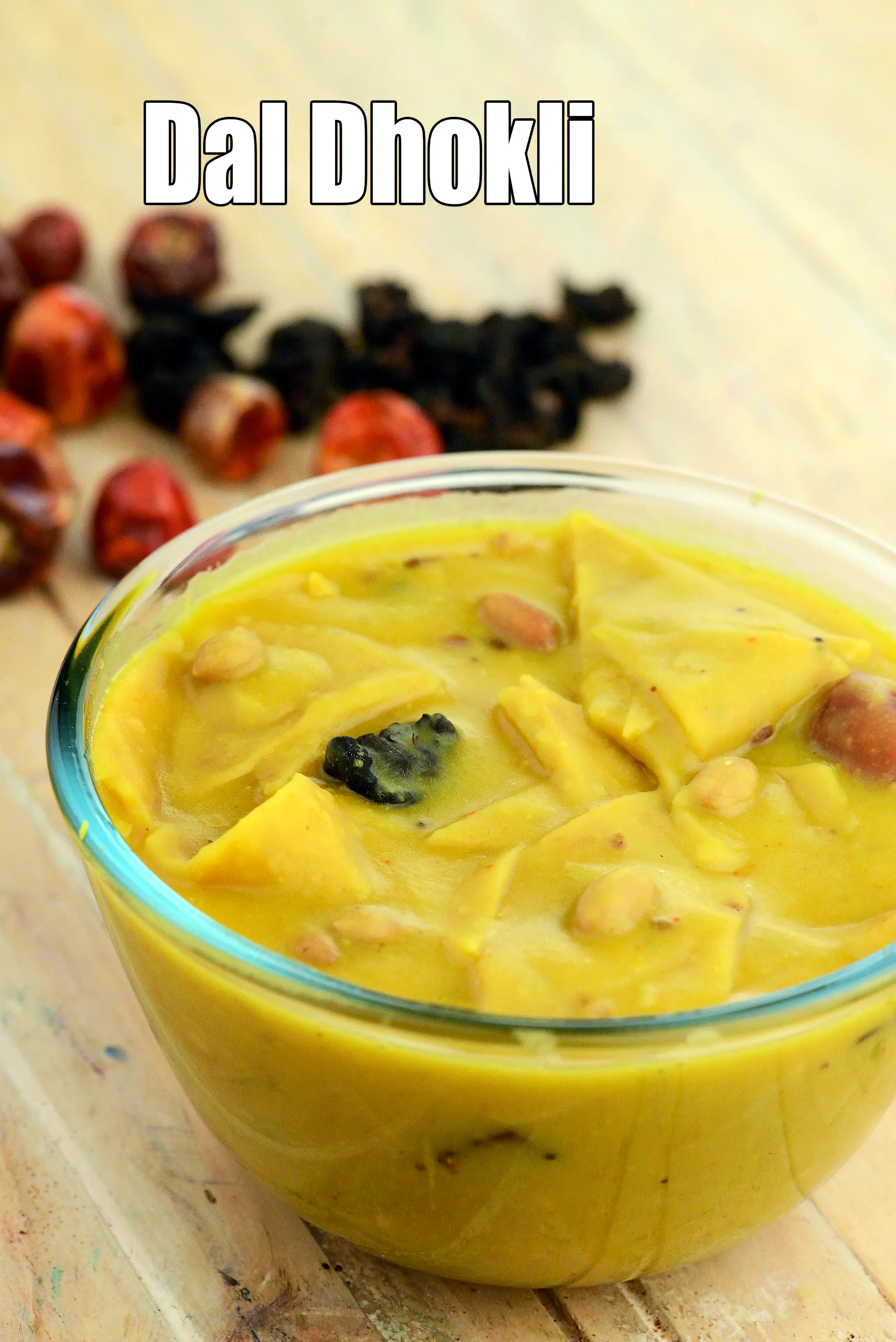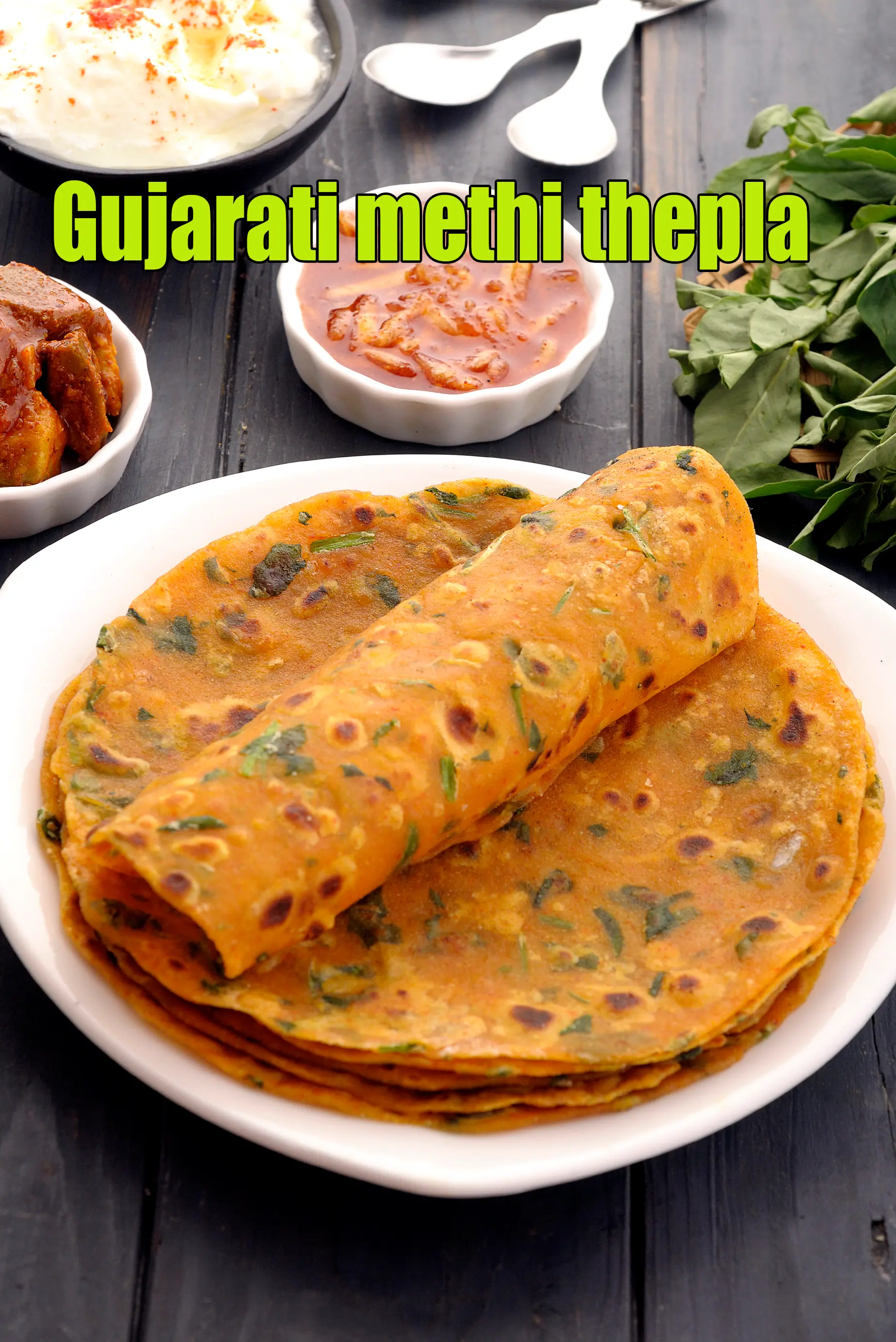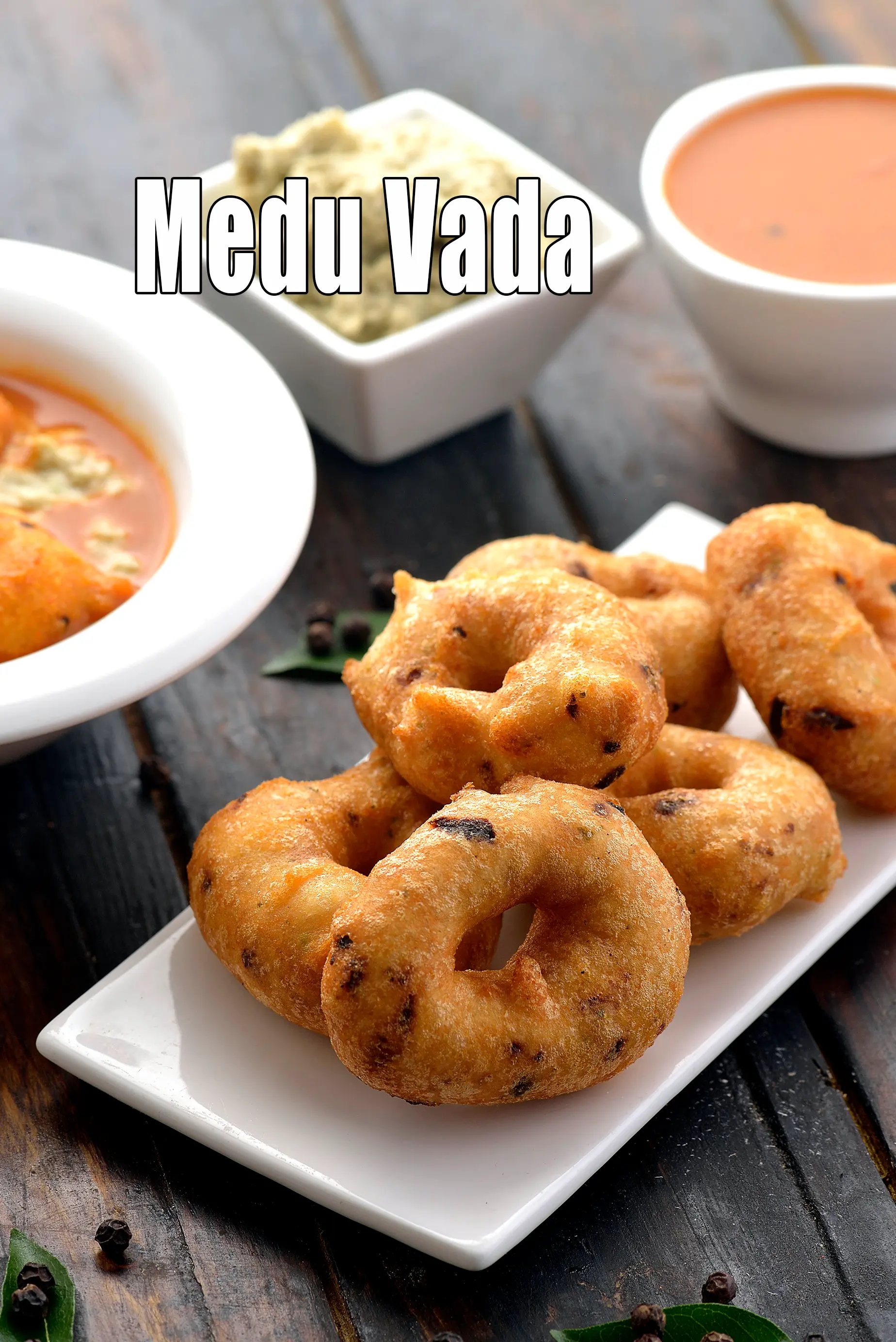Nutritional Facts of Potato Bhaji, Aloo Bhaji, Calories in Potato Bhaji, Aloo Bhaji
This calorie page has been viewed 39929 times
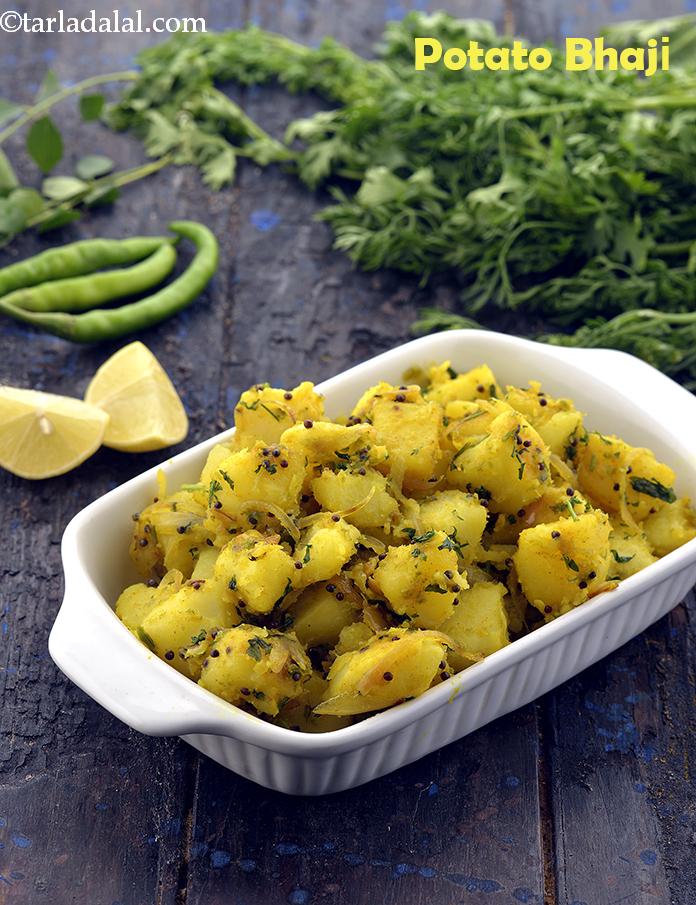
Table of Content
How many calories does one serving of Potato Bhaji, Aloo Bhaji have?
One serving of Potato Bhaji, Aloo Bhaji gives 220 calories. Out of which carbohydrates comprise 140 calories, proteins account for 10 calories and remaining calories come from fat which is 70 calories. One serving of Potato Bhaji, Aloo Bhaji provides about 11 percent of the total daily calorie requirement of a standard adult diet of 2,000 calories.
See recipe Potato Bhaji, Aloo Bhaji | aloo bhaji recipe | aloo bhaji with puri | batatyachi bhaji | with 16 amazing images.
Potato Bhaji also called Aloo Bhaji is made in every household in India. Easy to prepare, Aloo Bhaji is made from a tangy combination of boiled potatoes and sautéed onions spiced with chillies and perked up with lemon juice.
Most famous uses of Potato Bhaji is the stuffing used in Masala Dosa and in Puri Bhaji recipe.
The beauty of Potato Bhaji is that it’s quick to make and very tasty. So popular it is, that Aloo Bhaji is served on roadside Dhaba as its also very cheap to make and filling.
We have Potato Bhaji often for lunch or dinner with some puri or chapati. Sukhi Aloo Sabzi is something that I relate having since childhood. So go ahead and try this super famous Potato Bhaji today!
Is Potato Bhaji, Aloo Bhaji healthy?
No, this is not healthy. Let's see why.
Let's understand the Ingredients.
What's good.
1. Mustard Seeds: Tiny little mustard seeds, mostly added as a tempering, lend an interesting bite, exotic flavour and tempting aroma to Indian foods. Mustard seeds are from the mustard plant, which is a cruciferous vegetable related to broccoli, Brussels sprouts and cabbage.
2. Curry Leaves : Curry leaves have antioxidant, antimicrobial and anti inflammatory properties and is thus used widely in Ayurvedic medicines. Its antioxidant action helps to scavenge the harmful free radicals from the body and protect the health of our organs. These antioxidants may also show cancer preventive benefits. Curry leaves also aid in digestion and thus one can chew curry leaves when having a tummy ache. Some scientific research has shown that inclusion of curry leaves is beneficial for people with diabetes by stimulating insulin producing cells. It helps in skin care too. Intake of curry leaves can promote clear and healthy skin as well as promote hair growth and prevent hair fall. They are a fair source of Vitamin A (promotes vision) and calcium (promotes bone health) too.
3. Onions (pyaz, kanda) : Raw onions are a very valuable source of vitamin C – the immune building vitamin. Along with other phytonutrients from onions, it helps to build WBC (white blood cells) which serves as a line of defence against illness. Yes, it’s a source of many antioxidants, the most important one amongst them being Quercetin. The quercetin in Onions promotes production of HDL (good cholesterol) and lowers total cholesterol in the body. The sulphur in onions act as a blood thinner and prevents blood clotting too. This in turn would lower blood pressure and good for heart, diabetics. Read the benefits of onions.
4. Turmeric Powder (Haldi) : Turmeric helps in digestion of food thus helping to overcome indigestion. Haldi may help in reducing the growth of fat cells in the body. Turmeric, being rich in iron, is highly valuable in the treatment of anaemia and both the root as well as the powder should be a regular part of an anaemic diet. One of the health benefits of turmeric is it’s anti-inflammatory property due to the active compound, Curcumin, which helps to relieve inflammation of the joints and thus is a ladder to relieve pain related to arthritis. The curcumin in haldi also helps to ward of the bacteria’s causing cold, cough and throat irritation. Turmeric benefits in diabetes management by lowering blood glucose levels. Its antioxidant and anti-inflammatory effects are useful in the treatment of diabetes patients. It is known to be a good brain food and keep diseases like Alzheimer’s at bay. See here for detailed turmeric benefits.
5. Green Chillies : Antioxidant vitamin C in green chillies protects the body from effects of harmful free radicals and prevents stress. It is probably the high fiber which helps in controlling blood sugar levels. This it is a welcome addition to a diabetic diet. Suffering from anaemia? Add green chillies to your list of iron rich foods too. For complete details see benefits of green chilli.
6. Lemon, Lemon Juice : Lemon is a very good source of Vitamin C and thus helps in the production of white blood cells and antibodies in the blood which attacks invading microorganisms, prevents infection and builds immunity. Therefore, Lemon juice is given to prevent common cold. The ascorbic acid in lemon juice helps in absorption of iron from the food. So if you’re iron deficient or have anaemia squeeze a lemon on iron rich recipes. See detailed benefits of lemon, lemon juice.
7. Coriander (kothmir, dhania) : Coriander is a fresh herb often used as a flavour enhancer in Indian cooking. It is mainly used as a garnish. This is the best way to use it - no cooking. This preserves its vitamin C content which helps to build our immunity and bring that sparkle to the skin. The antioxidants vitamin A, vitamin C and the quercetin present in coriander works towards strengthening our immune system. Coriander is a fairly good source of iron and folate – the 2 nutrient which help in the production and maintenance of red blood cells in our blood. Good for reducing cholesterol and good for diabetics. Read 9 benefits of coriander to understand details.
What's the problem?
Potatoes (Aloo) : Potatoes being high in simple carbohydrates will lead to weight gain and are not good for people with diabetes, heart problem and obesity. Potatoes are recommended for malnourished children and people with low weight. See full details on why potatoes are bad for you.
Note : 1 cup = 200 ml (standard cup available in the market). The weight in grams varies for each ingredient.
Can diabetics, heart patients and overweight individuals have Potato Bhaji, Aloo Bhaji?
No, this recipe is not healthy and good for diabetics, heart and weight loss. Potatoes being high in simple carbohydrates will lead to weight gain and are not good for people with diabetes, heart problem and obesity.
Can healthy individuals have Potato Bhaji, Aloo Bhaji?
No, this recipe is not healthy and good.
What is a healthier sabzi or dal option ?
Here are some very healthy sabzis like paneer labadar , dahi bhindi ki sabzi recipe, chana palak, mushroom mutter masala, mooli ki sabzi recipe and bhindi masala recipe.
Mooli ki Subzi
Here are some super healthy dal recipes like palak toovar dal, khatta urad dal recipe, suva masoor dal recipe, hariyali dal recipe and healthy kadhi recipe.
8 Pointers to get healthy on a Indian diet
1. Eat healthy and say yes to good home cooked food. Prefer whole grains like oatmeal, quinoa, buckwheat, barley and healthy flours like bajra flour, jowar flour, quinoa flour, wheat flour etc. rather than refined ones like maida. Have healthy Indian fats like ghee, coconut, coconut oil in your diet.
2. Opt out of junk food, packaged food, deep fried foods. Prefer steamed snacks and other non-fried snacks. Check out some Healthy Indian Snacks. Remember to eat small frequent meals through the day as that will keep you always full and prevent your blood sugar from dropping. By starving your body through some diet, will not help you one bit. In fact, dieting will make you binge on 2 to 3 meals which is not good.
Skip having Indian junk foods like pav bhaji, bata vada, pakoras, gulab jamun as they cause your body to have insulance resistance. The resultant is your body will store more carbohydrates as fats, causing storage of fat in the stomach causing a paunch and slowing down of our fat burning process. So its a bad cyle which causes you more more hunger and fatigue every time you eat junk food.
3. Have 4 to 5 servings of vegetables and 2 to 3 servings of fruit is a must. Follow the logic of a vegetable in each main meal of the day and a fruit in-between meals. Check out a few Healthy Indian Soups and Healthy Indian Salads recipes using this food group.
4. Cut down on sugar and salt in your diet and pick honey ( very small amounts) or dates to sweeten your food. Slowly cut the sugar habit as this is not going to happen over night. Sugar is also called white poison. It is a simple carbohydrate with zero nutritional value. On intake, sugar will cause inflammation of the body which will last for many hours. It will spike your blood sugar level and shut down the fat burning process. This also causes high blood sugar levels in your body. The development of prediabetes comes from uncontrolled eating sugar and refined food products for many years and the classic symptom is if you have excess belly fat. This leads to diabetes and further onwards to heart attack, high blood pressure, strokes, impotence and kidney damage.
Salt and blood pressure. Apart from stress and obesity, one of the main reasons for high blood pressure is excessive sodium and salt intake. Most people find it difficult to limit the amount of salt in their cooking, thinking it will affect the taste of their favourite dishes.
This is not true. Bajra and jowar are rich in potassium and critical for those with High Blood Pressure as it lessens the impact of sodium. Eating more Potassium Rich Foods will remove more sodium from your body through urine. So include the basic bajra roti and jowar roti in your daily diet to have with Lower Blood Pressure Subzis Recipes.
5. Befriend a few healthy seeds and nuts like chia seeds, flax seeds, sesame seeds, walnuts and almonds. Stress. The easiest way to kill your immune system is chronic stress.
6. Sprouts are called ‘living food’. They are high is most nutrients and easy to digest as well. Let them feature in your meals at least thrice a week. Also Read : All Benefits about Sprouts.
7. Exercise 45 minutes every day. No excuse. You can walk fast, run, do weights, play your favourite sport or go to the gym. No activity reduces muscle tissue which will lead to muscke loss and all kinds of problems with that. Workout builds immunity and keeps virus or bugs away.
8. Sleep early and get up early. Get your body into rhythm and it will function best. Sleep helps your body to recover and makes you look much younger. Also getting good sleep prevent muscle loss, builds immunity and keeps virus or bugs away.
One serving of Potato Bhaji, Aloo Bhaji is high in
1. Fiber : Dietary fiber reduce the risk of heart disease, prevent the spike in blood sugar levels and hence super for diabetics. Consume more fruits, vegetables, moong, oats, matki, whole grains.
2. Vitamin B1 : Vitamin B1 protects nerves, helps in carbohydrate metabolism, prevents heart diseases and helps produce red blood cells.
3. Vitamin B3 (niacin) : Vitamin B3 helps in brain functioning and mental health. Also healthy skin formation.
4. Vitamin C : Vitamin C is a great defence against coughs and colds.
5. Folic Acid : Folic acid is an essential vitamin required throughout pregnancy.
6. Magnesium : Magnesium is required for formation of bones and teeth. It helps in the metabolism of calcium and potassium.
7. Phosphorus : Phosphorous works closely with calcium to build bones.
8. Potassium : Potassium is critical for those with high blood pressure as it lessen the impact of sodium. Eat more avocados, bananas, watermelons, papaya, plums and grapefruits.
9. Zinc : Zinc is involved in collagen synthesis and this helps repair skin and helps build immunity.
Note : a recipe is deemed high in a Vitamin or mineral if it meets 20% and above the recommended daily allowance based on a 2,000 calorie diet.
How to burn 220 calories that come from one serving of Potato Bhaji, Aloo Bhaji?
Walking (6 kmph) = 1 hour 6 min
Running (11 kmph) = 22 mins
Cycling (30 kmph) = 29 mins
Swimming (2 kmph) = 38 mins
Note: These values are approximate and calorie burning differs in each individual.
| Energy | 220 cal |
| Protein | 2.7 g |
| Carbohydrates | 35.2 g |
| Fiber | 2.8 g |
| Fat | 7.8 g |
| Cholesterol | 0 mg |
| Vitamin A | 309.3 mcg |
| Vitamin B1 | 0.2 mg |
| Vitamin B2 | 0 mg |
| Vitamin B3 | 1.8 mg |
| Vitamin C | 33.9 mg |
| Folic Acid | 27.8 mcg |
| Calcium | 33.9 mg |
| Iron | 0.8 mg |
| Magnesium | 47.9 mg |
| Phosphorus | 67.7 mg |
| Sodium | 18.2 mg |
| Potassium | 405.9 mg |
| Zinc | 0.8 mg |
Click here to view Potato Bhaji, Aloo Bhaji
Calories in other related recipes
